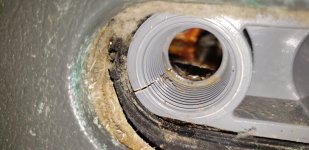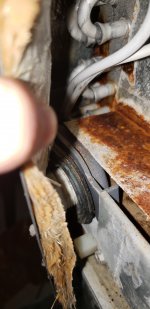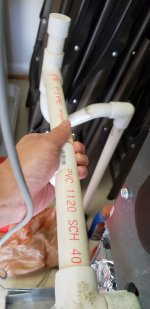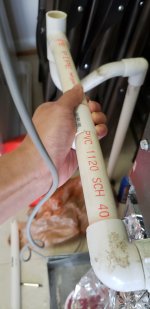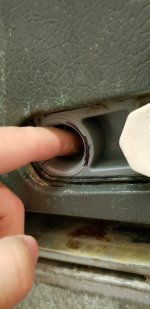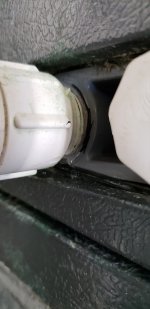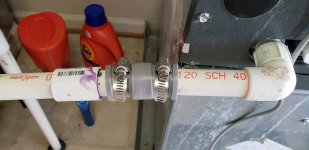GoingMyWay
Member
Anyone have any suggestions for how I can fill this crack in the threaded portion of the condensate pan in our HVAC? I initially thought about using CA glue, but then figured that would likely break as soon as I screwed the drain line back in. 100% silicone might be the best bet, but I fear it will be messy. In that scenario, I planned on squeezing in the silicone and then immediately screwing the drain line back in - I'm not sure I'll be able to unscrew the drain line after that though.
I guess alternatively I could squeeze in the caulking and try to wipe off any excess and then let it cure before screwing the drain line back in? I'd be a little concerned that the threads would be all filled up with silicone so it might not screw in anymore?
I just took a closer look at the picture I took and I suppose it's most important that whatever I use, I try to apply it as far back as possible.
Replacing the entire condensate pan isn't really feasible as I believe that would require having an HVAC tech come out and would require refrigerant recovery, cutting, brazing, etc.
Anyone have any thoughts or suggestions?
I guess alternatively I could squeeze in the caulking and try to wipe off any excess and then let it cure before screwing the drain line back in? I'd be a little concerned that the threads would be all filled up with silicone so it might not screw in anymore?
I just took a closer look at the picture I took and I suppose it's most important that whatever I use, I try to apply it as far back as possible.
Replacing the entire condensate pan isn't really feasible as I believe that would require having an HVAC tech come out and would require refrigerant recovery, cutting, brazing, etc.
Anyone have any thoughts or suggestions?

